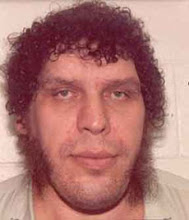
This is the Hariri Mosque next to St. George's Cathedral. The mosque is Sunni Muslim and the cathedral is Maronite Christian. These two buildings standing side by side in Downtown Beirut symbolize modern Lebanon in a lot of ways.
On the surface, you could say that a Muslim building functioning side-by-side with a Christian building symbolizes the challenge of Lebanese people today to coexist harmoniously. Lebanon has a diverse population including Sunni, Shia, Maronite, Catholic, and Druze. Often friction develops between the groups (see: Lebanese Civil War, 1975 - 1990). So it is a constant struggle for Lebanon to maintain harmony between its various ethnic/religious groups. Two religious structures standing right next to each other could be viewed as the embodiment of the Lebanese ideal of a functioning cosmopolitan society.
The two buildings could also be viewed another way. St George's Cathedral is very old, "dating back to the crusades". The Hariri Mosque is a newborn by comparison, with construction finishing just a couple of years ago. The new mosque dominates the new downtown skyline. It's beautiful dome and minarets tower over the cathedral next to it. The juxtaposition of the two has been characterized as "triumphalism" by some who view the mosque as dominating the downtown skyline. Like Hariri's clique putting their final stamp on downtown in a way that might suggest "this is ours".
Any way you chose to view it, the architecture of the buildings is amazing. Some say the reconstructed downtown feels a little contrived and meant for tourists only, but that will change with time. Those same people who feel that the mosque is a little imposing may grow to love it. The Eiffel Tower was once condemned as a monstrosity, now its the very symbol of France.
To me, downtown Beirut symbolizes the best and the worst of Lebanon. There you will find cafes and shops next to mosques and churches...and Roman ruins right in the middle of all of it. But its also the most exclusive area in the whole city. So you have the most affluent people in the country mingling with affluent people from other countries. Most Lebanese people wouldn't set foot in the area because it is so touristy and expensive.
And to actually live near downtown is even worse. Home only to politicians and businessmen (or Gulf Coast oil barons who use them as vacation homes or places to store their son's dirt bikes), apartments in the area are priced in the millions.
And so you have the two faces of Lebanon. One symbolized by various religious structures coexisting right next to each other, the other symbolized by an area that is all but off limits to the majority of the people the country. Lebanon's middle class is still developing, so people either have a lot money or they have almost none at all. The vast majority of people fall into the latter category. Most Lebanese don't drive BMWs and go to Buddha Bar. (Though the ones that do are conspicuous enough to almost make you think otherwise.)
So downtown you have it all: the various religious buildings commingling peacefully (albeit one much larger than the others), all in a flashy and exclusive area that very few Lebanese can afford to hang out in. Downtown Beirut is a fine metaphor for what Lebanon is today. Its a very old area that has been reconstructed to somehow be both inclusive and exclusive at the same time. And its quite a sight.

No comments:
Post a Comment